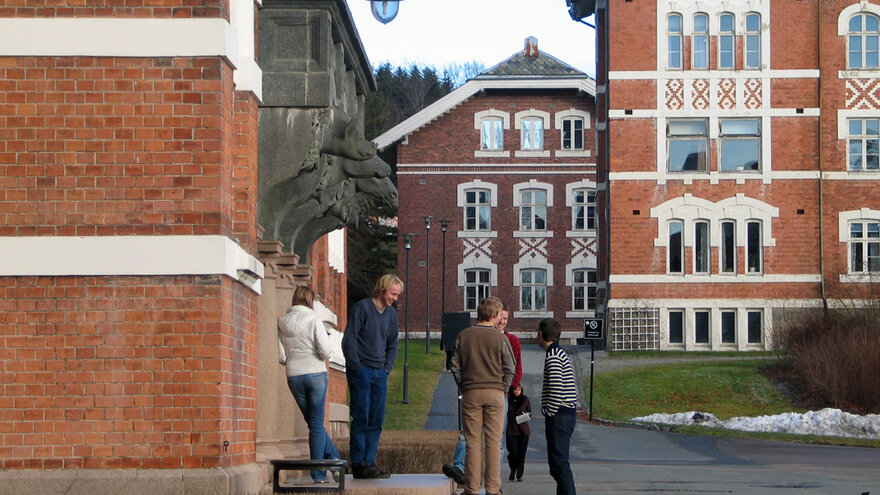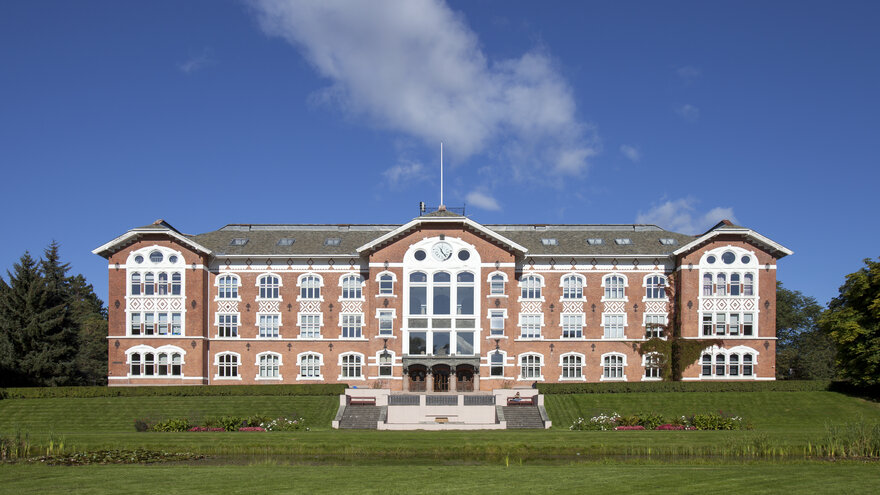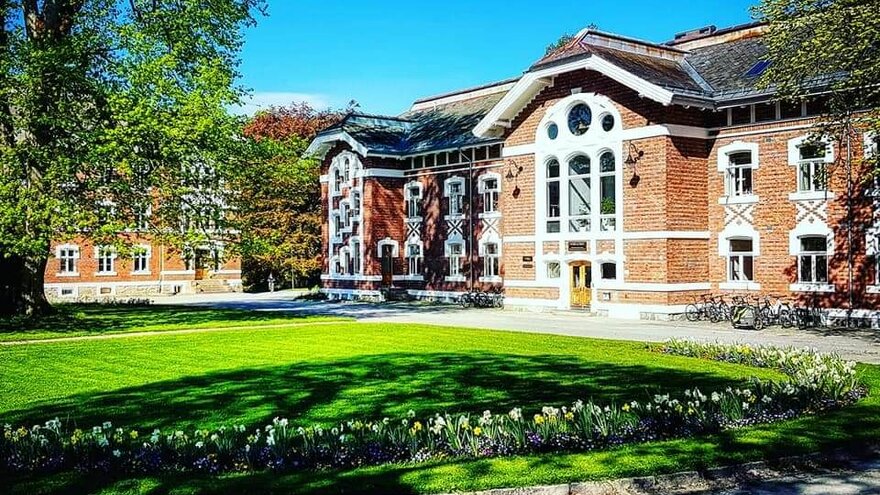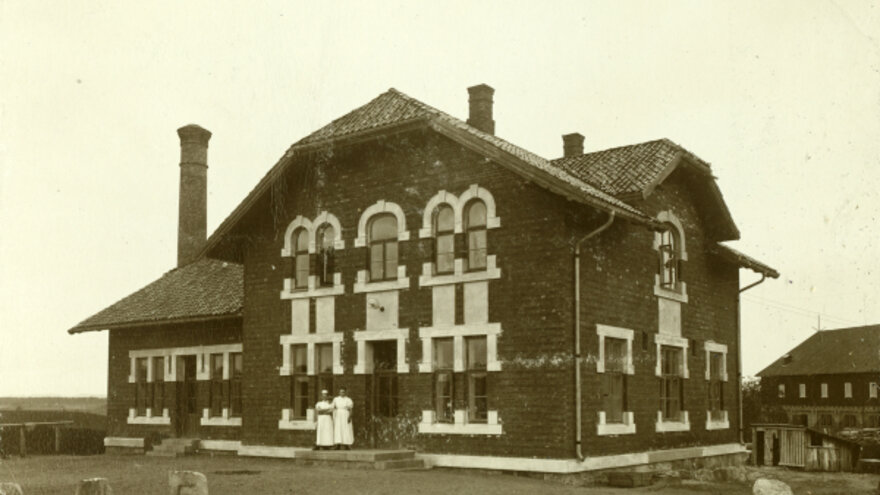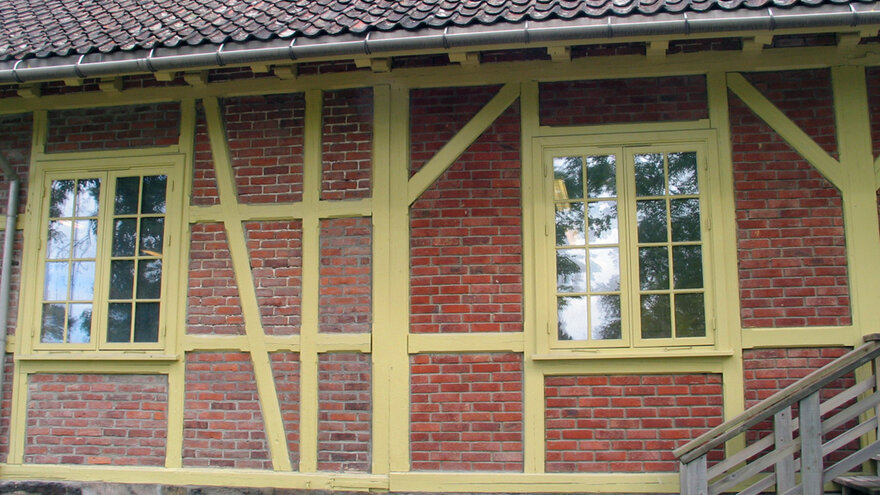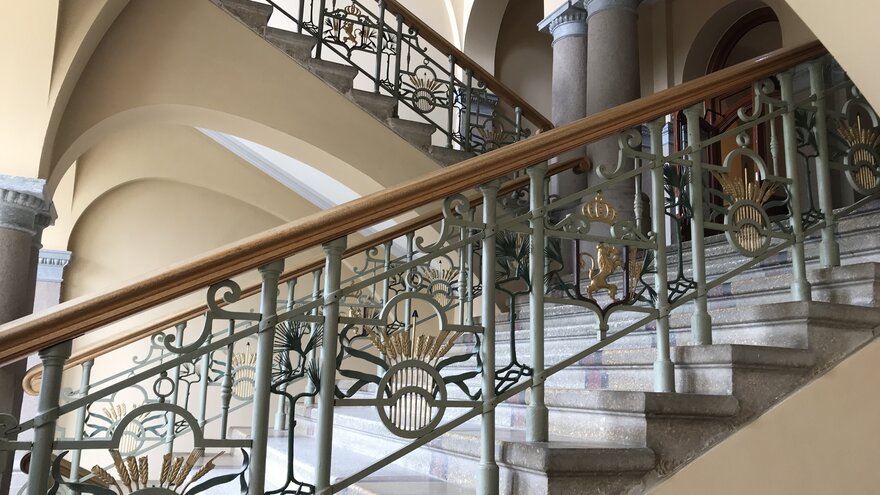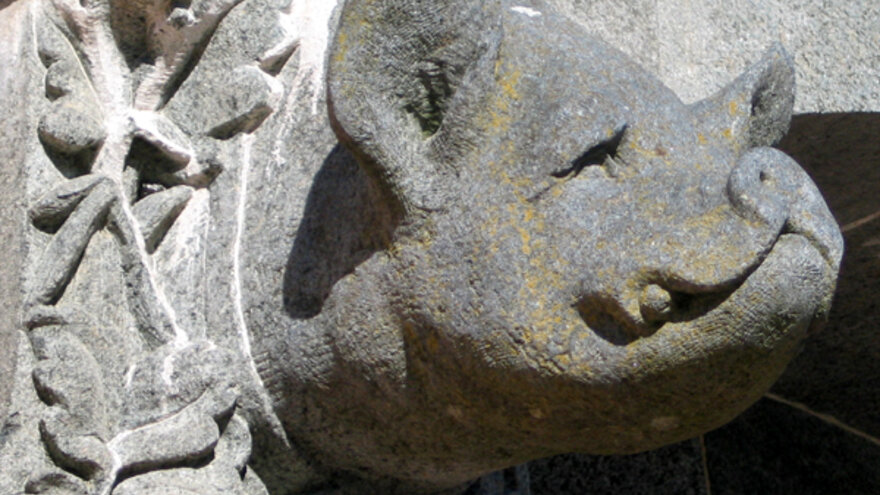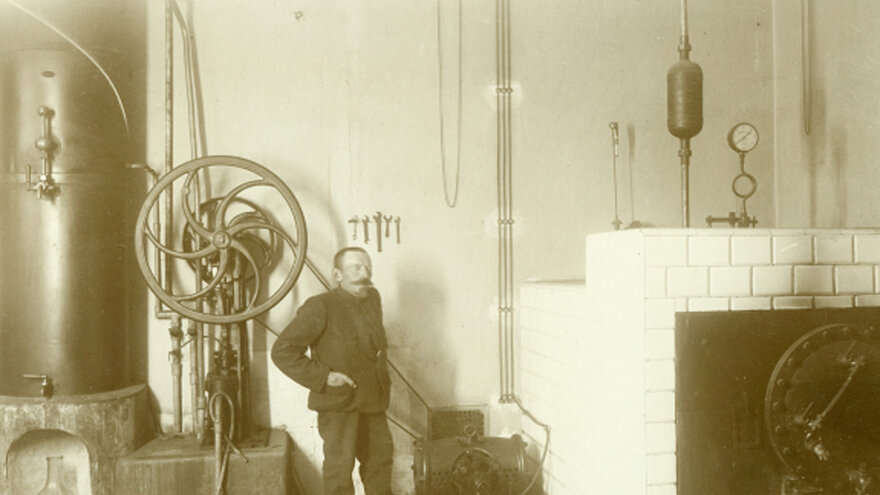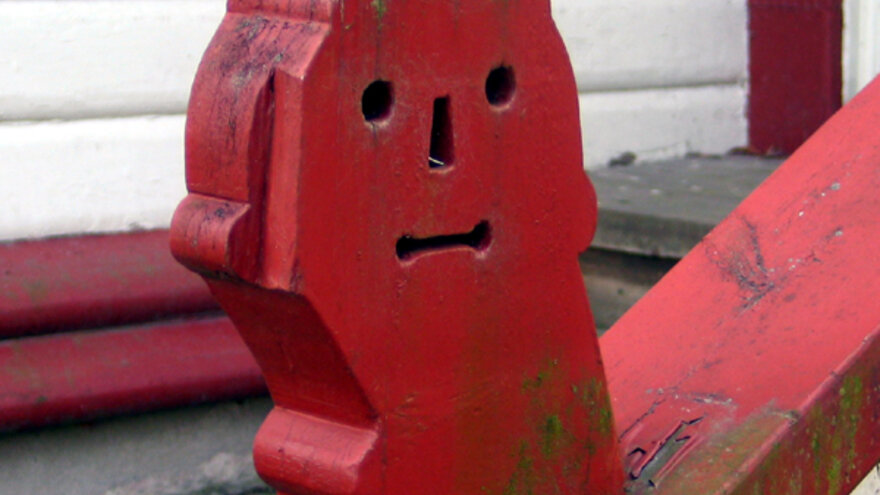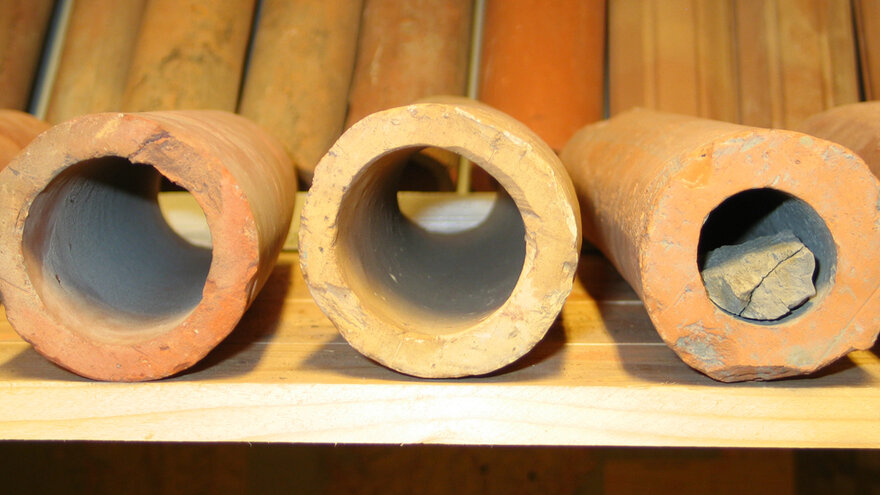The buildings 1859 - 1925
When the facility of The Higher Agricultural School in Ås was completed in 1859, there were 17 buildings in the main courtyard. Today, NMBU has 120 buildings.
The planning of The Higher School of Agriculture
In 1855, a commission was appointed for the construction of the Higher Agricultural School (Den høiere Landbruksskole), consisting of Member of Parliament J. Hoelstad (from Ås), Captain C. Th. Zwilgmeyer (from Ås), and Architect P.H. Holterman. Their task was to plan and oversee the construction work for the facility, closely collaborating with Fredrik A. Dahl. Dahl, who had significant influence, is credited with the idea of shaping the school complex to resemble a large farmstead. It was also his merit that the commission traveled to Sweden to familiarize themselves with agricultural school buildings there.
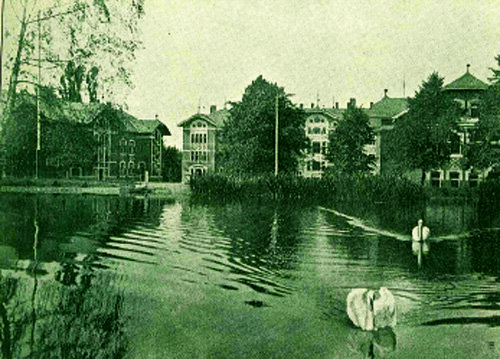
The main buildings around Svanedammen, now known as Andedammen. Here is evidence of why Andedammen was originally named Svanedammen (The Swan Dam). Photo: Retrieved from NLH 1859-1909.
The facility was constructed in such a way that the director resided in the main building like a large farmer, while the employees occupied the southern wing building. In a traditional farmstead, this would have been the “drengestua” (servant’s quarters). The actual school function was less prominent; it was concentrated in a simple building in the northern wing, with students living in scattered rooms in both the main building and the southern wing. These three buildings formed the inner farmyard.
The operational buildings were gathered in an outer farmyard, separate from the inner farmyard. The architectural style of the complex was not cohesive. Instead, the buildings exhibit variations, which can be seen as a reflection of the transitional period in Norwegian art during the mid-19th century.
The architects
P. H. Holterman (1820-1865) had an education from the Royal Bauhochschule in Berlin in the 1840s, during the flourishing of the Romantic period. He embarked on several study trips to Germany during the Kugler/Semper era and collaborated with J. H. Nebelong and J. W. Nordan in connection with Oscarshall, where he provided drawings for a late Romantic-style bathhouse. Towards the end of the 1850s, this phase came to an end, and influenced by the Gothic brick architecture of H. E. Schirmer and A. F. W. von Hanno, he built a church in Nes (in Romerike) and another in Aremark. His interest in functional rationality became prominent, and this is reflected in the buildings he designed and erected for the school complex in Ås.
Ole Sverre’s buildings were constructed between 1897 and 1925. This period coincided with a time of significant societal upheaval and transformation. When considering international epochs, one can include the Victorian era (1837-1901), the heyday and decline of the German Empire (1871-1918), World War I (1914-1918), and the interwar period, which witnessed the emergence of modernity.
The establishment of the college was a significant project. When Director Hirch assumed the position in 1895, industrialization was well underway.
Ole Sverre studied at the German university, which provided him with a solid background to appreciate the utility of technical innovations in the college’s buildings.
Inntunet, main building and two wing buildings
The three school buildings (main building with two wing buildings) were located in Inntunet. They had a very modest and Spartan appearance, with a subtle hint of details in the early Swiss style. This style can also be found in buildings around Slottsparken in Christiania (now Oslo) from the 1840s.
- *Inntunet - The inner farmyard
Driftstunet
At driftstunet, the architectural style of the original buildings was simple. After the expansion in 1892, the barn building was completely executed in the Swiss style, yet practical both technically and functionally. The combination of brick animal rooms and timber-framed feed rooms was considered a significant advancement compared to traditional log construction. Log construction was now viewed as romantic and therefore old-fashioned and outdated.
- *Driftstunet - The outer farmyard
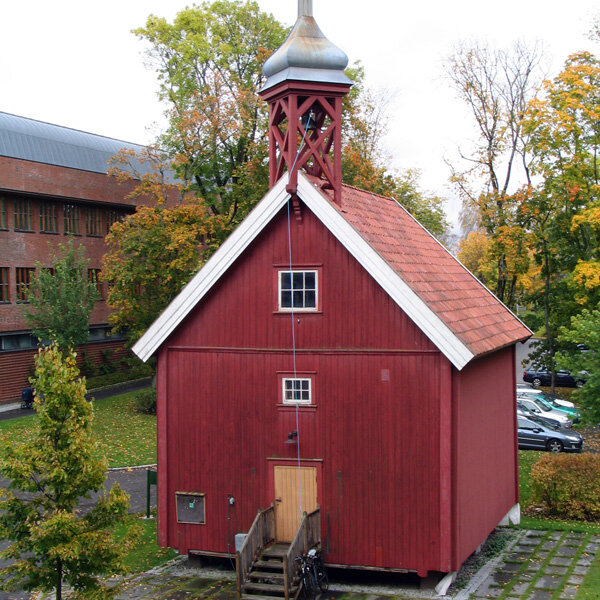
The only buildings that exhibit a tendency toward romantic rural cultural tradition are the “stabbur” (storehouse) and the forge/workshop building. The “stabbur,” with its log construction and bell tower, reflects a Norwegian expression, while the forge/workshop, with its masonry timber framing, draws from Swedish and continental traditions.
The Farm buildings
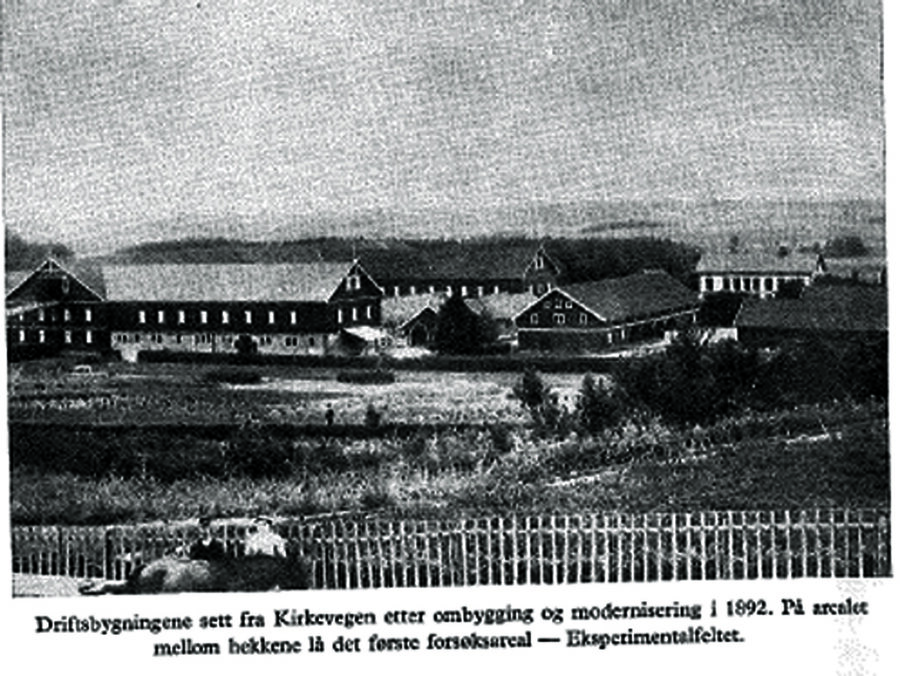
Barn and carriage hide as seen from Kirkvegen. Photo: from archive
The farm buildings, with its compact U-shape, formed a counterpart to the open horseshoe shape of the inner farmyard and lay at a 90-degree angle to it. The farm building consisted of three wings: a southern barn wing, an eastern stable wing, and a western stall wing. It contained 72 stalls and booths for 16-20 young animals, 24 stanchions, 4 boxes for sick or pregnant horses, and space for 60 sheep.
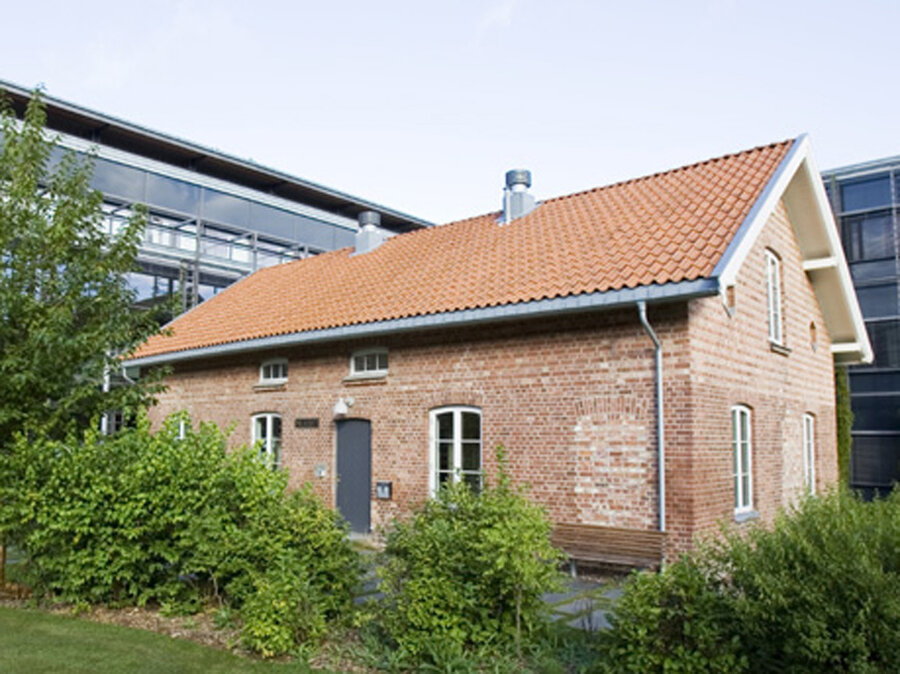
The pigsty was situated in a way that partially closed off the space between the wings of the farm building. The area in the outer farmyard was used as a manure pit with an underground cesspool. In the mid-1890s, the pigsty was converted into living quarters for those who worked in the outbuildings (various buildings in the outer farmyard). It still stands today and is affectionately known as Palasset (The Palace).

The carriage and tools shed was a single-story building with a loft at knee height. The construction was timber framing with exterior timber paneling. The building had doors facing north and an entrance in the eastern gable, leading to a longitudinal driveway bridge. The woodshed and drainage pipe storage were simple sheds with paneled timber framing. The latter had space for 40,000 drainage pipe elements for drying, which were subsequently fired in the nearby brick kiln with a capacity for burning 20,000 pipes at once.
Farm buildings outside the inner farmyard
The farm buildings outside the inner farmyard were scattered and displayed more individualistic architectural styles. The three-story-tall grain barn faced the road upon entry and was constructed using log construction, likely with exterior paneling
The two “stabbur” (storehouses) faced the inner farmyard and served as storage buildings for household functions. Both were built using log construction, and the larger one featured a traditional roof turret with a food bell and a weather vane bearing the year 1859. This particular “stabbur” still stands today.
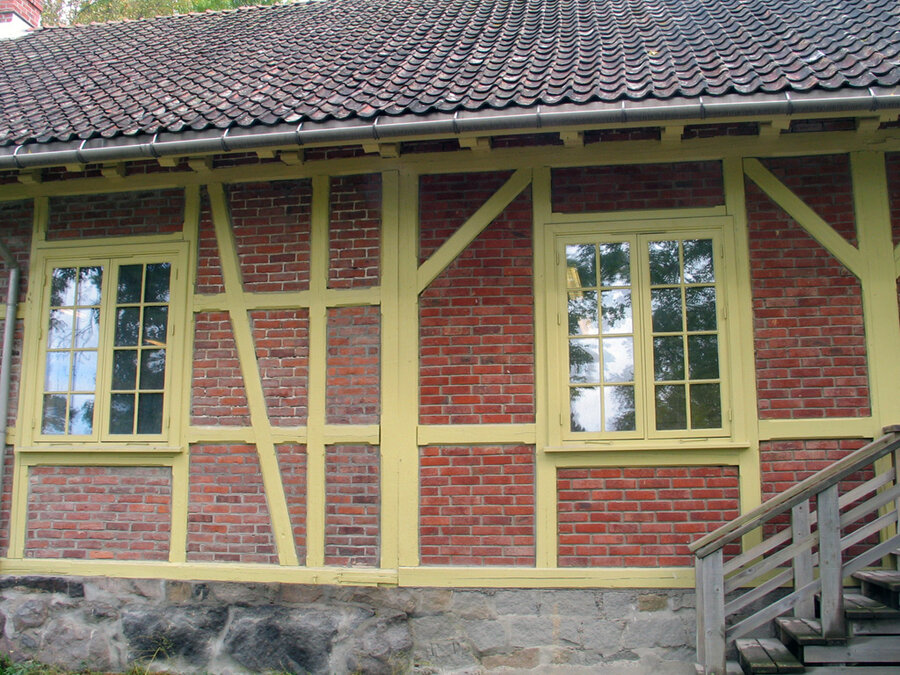
- The distinction between old and new stone can be observed. Smia (the blacksmith shop) 2007. Photo: Kjersti Sørlie Rimer.
The workshop and blacksmith building consisted of two parts, separated by an open central area where horses were shod and major repairs were carried out. An old photograph shows that the roof covered both buildings and the open workspace between them.
Buildings built, burnt and demolished between 1859 og 1895
The three new buildings that were constructed between 1859 and 1890 resulted from operational needs that were not anticipated during the planning work in the 1850s. In 1862, a poultry building was erected, which was later converted for educational purposes, housing anatomical and geological collections, as well as a dissection room
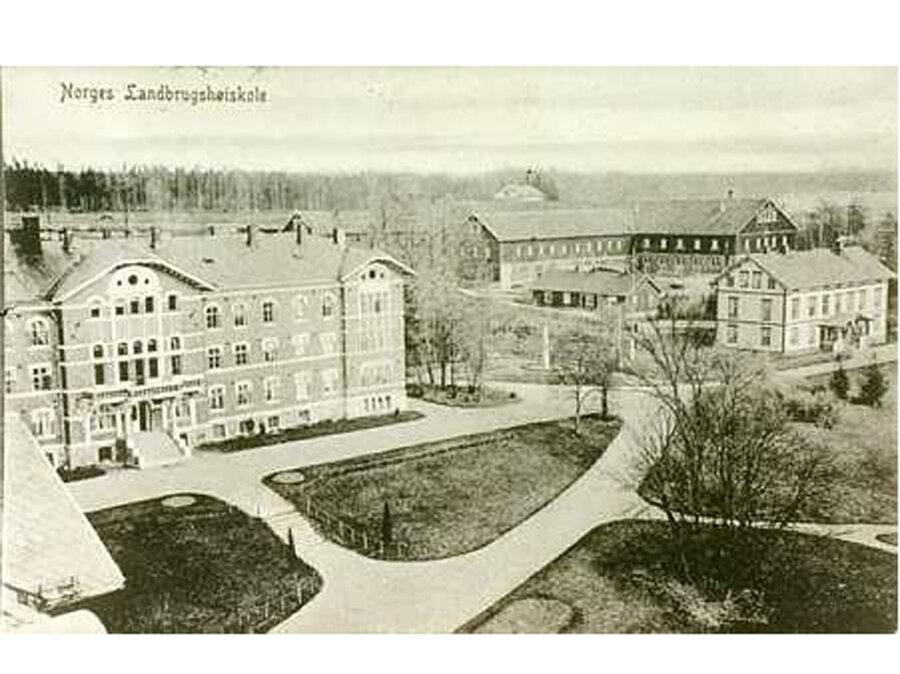
In 1863, a problem arose. It turned out that it was impossible to sell the quantity of milk produced, so a dairy processing facility had to be established. The workshop section in the smithy was used for this purpose until 1867, but then Parkgården was constructed as a separate dairy building.
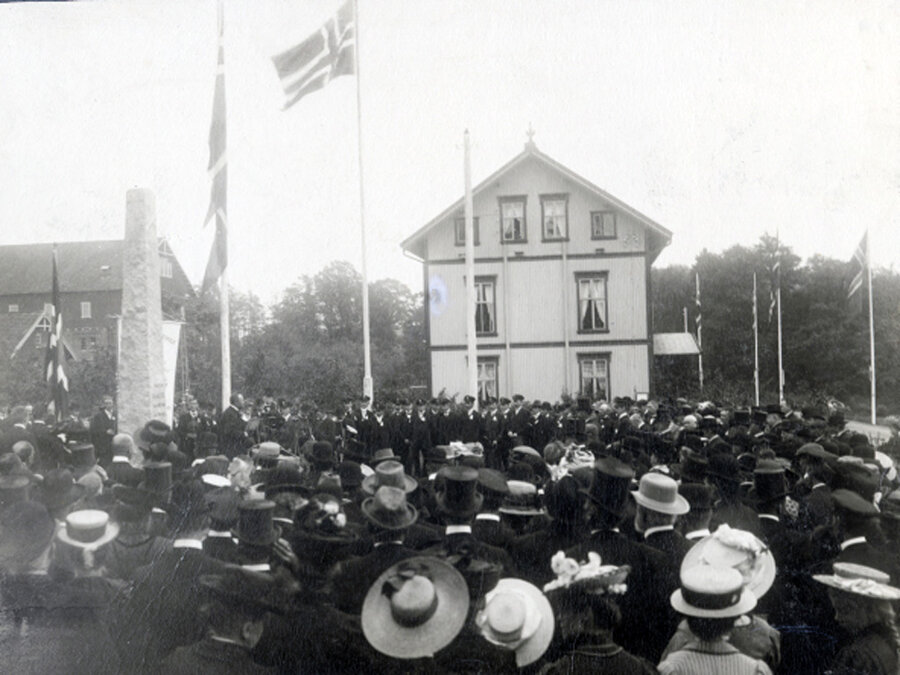
In the beginning of 1880, the dairy operation was discontinued because the new railway made it possible to deliver milk directly to Oslo. Parkgården was expanded and reconfigured, partly for collections and residential purposes, but primarily as an educational building. The architect of Parkgården remains unknown. The building is constructed in the traditional Swiss style, with flourishing Gothic carpentry in the entrance area.
In 1891, Director Koller applied for permission to build a new barn, and his request was granted. The barn section in the outer farmyard was demolished, and in 1892, a significantly expanded driftshus (operational building) was completed (with a price tag of 61,344 NOK). This construction represented a major advancement and drew from decades of experience in agricultural building practices at the school. There were publications discussing the profound changes in Norwegian agricultural architecture, and this had a formative impact, particularly with its pioneering expression of the early Swiss architectural style.
In the middle of 1890's three buildings were demolished: the brick kiln, the ice cellar, and the utility building (nødtørftshuset).
On the night between February 1st and 2nd, 1895, the southern wing building (now known as Økonomibygningen) burned down completely. This had a severe impact on the school’s administration, and there was a crisis atmosphere when Johan L. Hirsch replaced the ailing director Koller on July 20th. Hirsch began the work of developing the school.
The information is entirely sourced from "Bygninger ved Norges Landbrukshøgskole teikna av Ole Sverre" written by Erik Aas jr. in 1996.
Development within building materials in the period
In the pre-industrial society, building materials in Norway were primarily made of timber. This timber was used in log or post-and-beam constructions, which were often covered externally with panels of various types. Common foundations were made of gray stone, and the most typical roofing materials in rural areas were sod, wood shavings, straw, or slate. In urban areas, brick tiles or hewn slate were more commonly used for roofing.
The use of stone materials, natural stone, or bricks was limited and mostly associated with representative buildings such as churches, manors, fortifications, and the Danish-influenced settlements in the cities.
During the Empire era in Christiania (now Oslo), particularly during the construction of the Royal Palace and the University, there was a demand for reworked natural stone. This stone was intended for use in plinths, stairs, columns, and facade details of the new prestigious buildings. As a result, there was a significant production of reworked granite and syenite in the district near the city and in the Iddefjorden area in Østfold. The stone industry flourished from the last half of the 19th century until the outbreak of the First World War. Although this work was considered craftsmanship, it was organized in large enterprises and could rightfully be called industry. A similar expansion occurred in the production of brick (tegl). Several brickworks emerged, including those in the clay-rich areas of Østfold (around Fredrikstad) and Romerike.
Internationally, iron and steel became dominant construction materials in the early second half of the 19th century. This was evident in landmarks such as the Eiffel Tower in Paris and many railway bridges.
In Norway, concrete was initially used for foundations and base walls, and later in building structures, tank facilities, and other technical installations.
During the industrialized era, Europe and the USA introduced many innovations in building materials, construction techniques, and various technical facilities and installations aimed at facilitating the use and operation of buildings. These installations included central heating, mechanical ventilation systems, elevators, pressurized water supply, water closets, and organized drainage systems.
Informastion is sourced from "Bygninger ved Norges landbrukshøgskole drawn by Ole Sverre” written by Erik Aas jr. in 1996 and from NLH's anniversary books.
